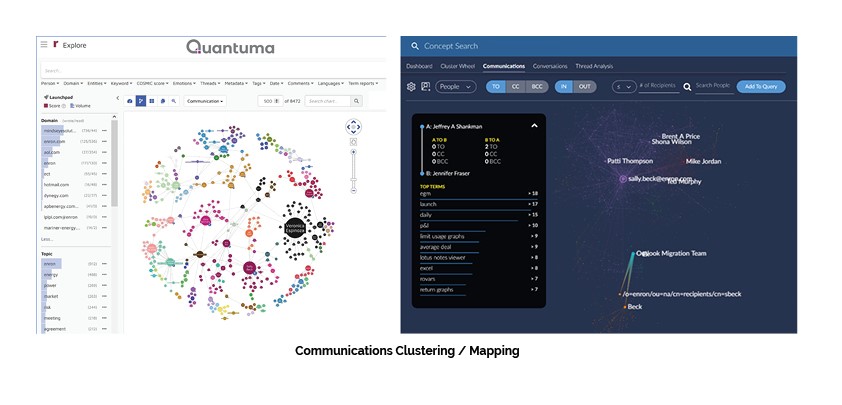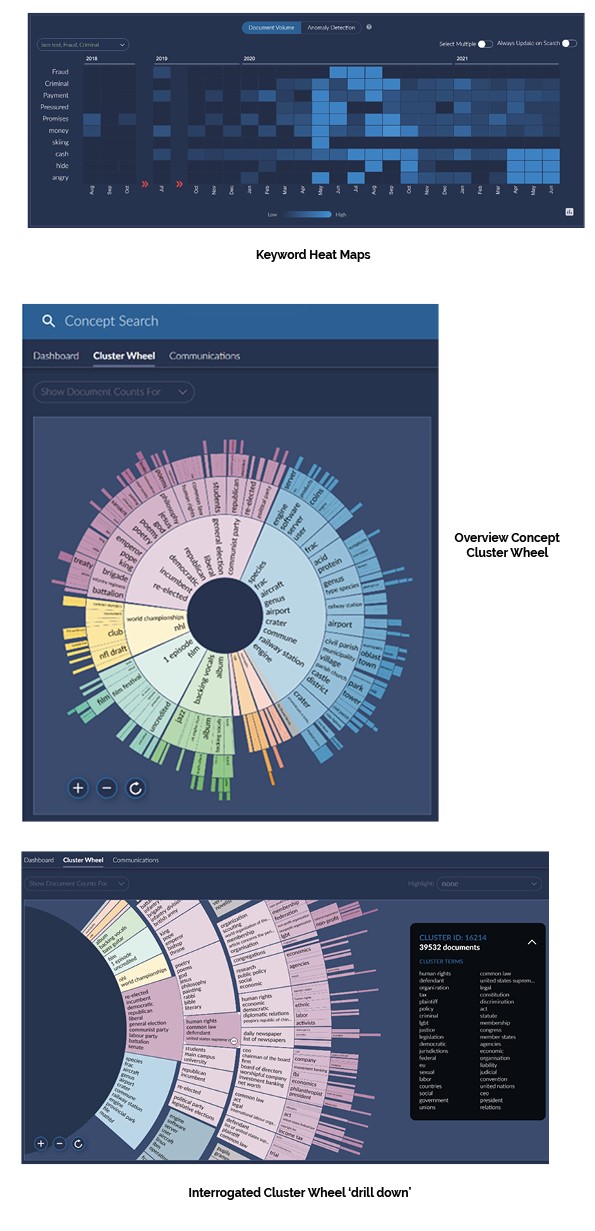Our eDiscovery team utilises cutting edge technology to identify and target key areas at an early stage, ensuring key data is secured and resources targeted appropriately. We load relevant data onto our review platform early in the investigation and then leverage the power of our advanced investigation tools (typically, but not limited to Brainspace and Reveal AI) for advanced analytics and concept searching – also termed ‘Technology Assisted Review’ (TAR) or ‘Augmented Intelligence’ (AI).
As the system is cloud-based, it also allows us to easily collaborate with clients by efficiently providing documents for review or vice-versa.
The technology is designed to ‘Augment not Replace’ experts and the document review workflows. It effectively targets key documents, based on initial information, and refines and learns as the matter progresses.
Not all cases will benefit from TAR or AI, but those that do will often result in significant time and cost savings. In addition, the Disclosure Review Document (DRD) used during case management conferences explicitly asks the question as to whether TAR has been considered for the matter and, if not, the reasons why.
TAR or AI use a range of techniques to filter, segment and review the documents and emails of relevance, as follows:
- Concept Searching – either ‘supervised’ whereby the user provides the system with phrases, paragraphs or documents and effectively asks it to ‘find me more like these’, or ‘unsupervised’ where the system automatically generates ‘cluster groups’ that contain similar content for review
- Sentiment Analysis – words, phrases, capitalised words or relational words are used to analyse the mood of the email, for example ‘angry emails’, and these can be combined with other filters e.g. ‘angry emails, mentioning keywords/concepts X+Y, sent outside of work hours’
- Communication Analysis – a searchable visual tool for assessing topics of communication between different individuals, to look for patterns or unusual activity e.g. emails to an unknown external address
- Image Identification and Labelling – the system will analyse the image and label it with suggestions such as ‘Construction Site’, ‘Man at ATM’, ‘Man, Car, Shopping’, ‘Documents/Scans’
- Machine Learning – the system analyses documents that have been reviewed by a human reviewer, looks for patterns in the textual content and underlying metadata, and then presents the user with groups of documents in folders according to their ‘Likely Relevance Rank’
The platform incorporates multiple easy-to-navigate sections, allowing our team (or the legal advisors/client) to quickly utilise the features that best match the matter type. Below are a selection of screenshots to illustrate the graphical user interfaces, and provide better insight into how the features work:


All matters are different, and all technology is only as good as the user piloting it, so we employ standard sensible workflows at the outset, and then augment them with whichever functionality best matches requirements.
For a live demonstration of the tools used, to discuss your requirements or if you have any questions, please contact a member of our team.










